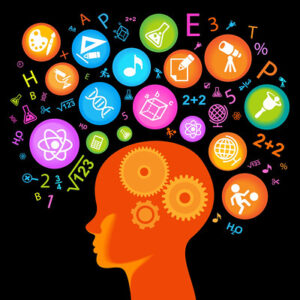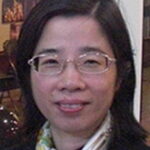It is important to cultivate students’ divergent thinking skills towards scientific creativity. But how to provide effective training on divergent thinking? And what is the role of individual differences in training effects?
Creativity plays a major role in human development, particularly in the domain of science, which requires creativity to discover new problems and to generate new ideas or solutions. Creativity involves a high-level of cognitive process involving convergent thinking and divergent thinking. Divergent thinking, which encourages people to “think outside the box” is identified as an essential component of creativity. In science education, divergent thinking for creativity has received inadequate attention compared with other higher-order cognitive skills such as inquiry and reasoning. This study aimed to address the gap by investigating the following questions: How can we improve students’ divergent thinking skills towards scientific creativity through effective training? How might individual differences affect the training effects? The original report of this study is published here.
 Source: C.W. Karl
Source: C.W. Karl
Making divergent thinking accessible to learners
In view of the importance of divergent thinking in creativity development, training on divergent thinking has been explored in institutions and organizations and has shown promising effects. Relevant techniques or strategies (e.g., analogies, association, and metaphors) are proposed for generating new ideas. While learners found these strategies useful, it is not easy for them to apply such strategies due to the complex cognitive process involved in divergent thinking. We argue that it is important to facilitate divergent thinking by making the strategies accessible to learners. To do so, we externalized the core elements of divergent thinking, which include (a) association, (b) decomposition, and (c) combination with adjustment, in a training program.
Association. When people search their memory for ideas, the semantic clusters of information related to the given concept, objects, or situations (COS) can be activated one after another, and associative chains are therefore formed. The retrieved elements may be remotely connected, which could elicit original ideas.
Decomposition. To generate diverse and original ideas, people need to search cues from different perspectives, which can be generated by converting a COS into one with rich details by decomposing the whole into parts or listing the attributes.
Combination with adjustment. Combining different elements or adjusting existing ideas can engender new ideas. A set of prompt verbs (e.g., magnify, replace, eliminate, invert) may help stimulate such a thinking process.
Investigating individual factors of creativity
The literature shows that creative performance can be influenced by individual differences in domain knowledge and creative potential. Accordingly, individuals did not benefit equally from our creativity-related training. Firstly, domain knowledge and expertise serves as the information source for idea generation, which plays an important role in creativity and which may differ among individuals. The cumulation of knowledge and expertise within the domain is essential for creative scientists. Secondly, creative potential in ideation is a reliable indicator of creativity. Science is a domain in which students learn to identify problems, make hypotheses, offer reasons, and generate solutions. All of these activities demand the generation of new ideas. Given these findings, we decided that further research was needed to investigate whether domain knowledge and individual differences in creative potential make a difference to creativity in science.
What we did
Our study investigated how students’ scientific creativity can be improved through effective training on divergent thinking and how individual differences impact the training effects on creativity development. The participants were 105 Grade 11 students from two parallel classes in a China high school. The two classes were randomly assigned to experimental and control conditions. Two Scientific Creativity Tests (SCT) were administered with all the participants, one before the training and the other after the training. The tests were to assess student scientific creativity performance based on their responses to a set of scientific creativity-related tasks. Before training, students’ domain knowledge score was collected, and their creative potential was assessed.
The training consisted of two sessions. Session 1 provided basic training, where students were introduced to the basic concept of creativity, its value in human life and society, the features of creative ideas or creative thinking, and real-world examples of scientific creativity. Session 2 helped students to master the core elements of divergent thinking (i.e., association, decomposition, and combination with adjustment). It included: (1) an introduction on divergent thinking; (2) discussion on how thinking can be influenced by habitual patterns; (3) an introduction on divergent thinking strategies with real world examples, and (4) student discussion with practice on the application of the strategies. Students in the experimental condition received the whole training, while those in the control condition received Session 1 only.
What we found
Effective training through externalizing the core elements of divergent thinking
The results indicated no significant differences between the two conditions in students’ creative potential, domain knowledge, and pre-training SCT score. Post-training SCT scores were significantly correlated with pre-training SCT scores, creative potential, and domain knowledge. Therefore, these three variables were used as the covariates to exclude any pre-existing differences in students’ SCT performance. We found that students in the experimental condition performed better in the post–training SCT than those in the control condition. Also, they reported to have a high level of interest in and perceived value of the training program. The results reflect the success of the training approach featured by externalizing the core elements of divergent thinking towards scientific creativity. By mastering these core elements, students were stimulated to search cues from diverse perspectives by decomposing a COS, combine seemingly unrelated concepts, and adjusting existing ideas.
Training effectiveness not influenced by individual difference in creative potential
Students with a high level of creative potential performed better than those with a low level of creative potential in both pre-test and post-test of scientific creativity, indicating the importance of creative potential to creativity performance. However, we did not find that the creative potential interacted with the training effects.
Training effectiveness varied with individual difference in domain knowledge
Students with a high domain knowledge score performed better than those with a low domain knowledge score in both pre-test and post-test of scientific creativity, which indicated that domain knowledge could influence creativity performance. Moreover, we found that students with a high knowledge score benefited more from the training than those with a low knowledge score. It might because divergent thinking requires a minimal level of domain knowledge or expertise. Additionally, students with more science knowledge might be with a higher intellectual ability, which might help them benefit more from the training. Future research is needed to examine this issue.
Limitations
This study has some limitations. Students’ scientific creativity performance in this study was measured using a test that focused on idea generation. This might not fully reflect scientific creativity in real-world contexts which involves not only idea generation but also idea implementation. Although divergent thinking is a reliable indicator of creativity, the cognitive skills and abilities required for creativity include other aspects such as convergent thinking which we did not look at in this study but hope to look at in further studies.
Messages from this study
The findings have several implications for school educators. Firstly, effective training on divergent thinking, which helps students to capture the core elements of divergent thinking (e.g., association, decomposition, and combination with adjustment) works well to improve students’ performance in scientific creativity-related task. In school education, it is important to make the complex cognitive process accessible to students for effective thinking and learning towards desirable performance. In relation to this study, we have further examined the use of a cognitive mapping tool to support the training on divergent thinking.
Secondly, we found that training effectiveness was not affected by individual difference in creative potential. Students seemed to equally benefit from training, no matter whether they had a high or low level of creative potential. This result may imply that effective training is needed for all students regardless of their creative potential. In other words, creativity is not a gifted trait of some people but can be improved through effective training or practice.
Thirdly, divergent thinking ability is important, but not the only aspect that leads to creative production. The result that students with a higher score in domain knowledge benefited more from the training suggests the need for combining divergent thinking training with domain knowledge acquisition to magnify the training effects. We need more research to investigate how scientific creativity through divergent thinking can be incorporated in formal science classes or extra-curricular activities.
Finally, it should be noted that besides divergent thinking, scientific creativity may require other forms of thinking (such as convergent thinking, reverse thinking, and putting ourselves in the shoes of other people). The central point of scientific creativity is to break frames and biases so as to be able to fundamentally reconsider scientific belief systems.



Leave a Reply